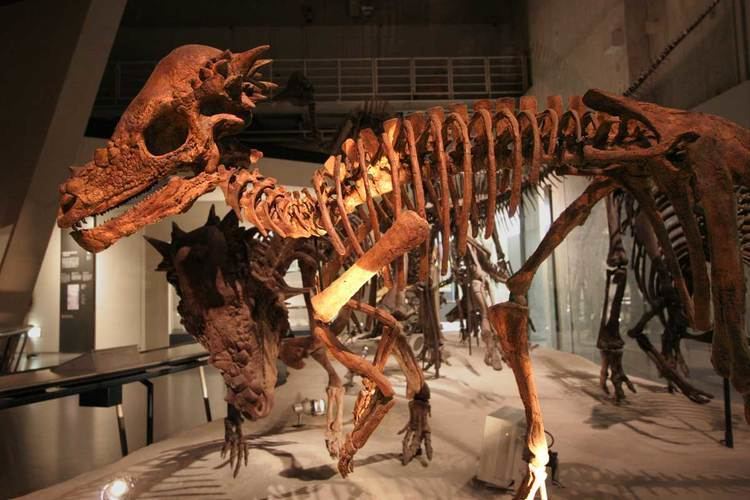 | ||
This timeline of pachycephalosaur research is a chronological listing of events in the history of paleontology focused on the pachycephalosaurs, a group of dome-skulled herbivorous marginocephalian dinosaurs. One of the first major events related to the history of pachycephalosaur research actually regards the discovery of an unrelated dinosaur called Troodon, reported from the western United States by Joseph Leidy in 1856. The type specimen of Troodon was simply an unusual tooth, but the close resemblance between Troodon teeth and pachycephalosaur teeth would cause taxonomic confusion for over a century. This was resolved by Phil Currie in 1987, who realized that Troodon belonged to a group of bird-like carnivores then known as saurornithoidids, but since renamed Troodontidae after Troodon itself. The first scientifically documented true pachycephalosaur remains were discovered in Early Cretaceous rocks from England and named Stenopelix not long after Troodon was named in America. Other notable early finds include the well-known pachycephalosaur Stegoceras validum.
Contents
In 1924, Charles Whitney Gilmore named the family Troodontidae after Troodon, but most of its members would be recognizable today as pachycephalosaurs. Seven years later, Gilmore named the new species "Troodon" wyomingensis which would be formally reclassified as Pachycephalosaurus in 1943. Pachycephalosaurus was so unusual that Sternberg named a new family for it, the Pachycephalosauridae. From the time paleontologists identified the pachycephalosaurs as a distinct group of dinosaurs, the chief mystery surrounding their biology has been the function of their distinctive cranial domes. Edwin Colbert interpreted the structure as a biological battering ram in 1955, but never specified who or what may have been on its receiving end. The idea that it was used in head butting between members of the same pachycephalosaur species was first proposed by science fiction writer Sprague de Camp. From then it became a staple of both scientific and cultural reconstructions of these animals.
Nevertheless, this perennial hypothesis would come to be criticized by researchers like Hans-Dieter Sues as less likely than "flank butting" where pachycephalosaurs' domed heads would be aimed at rivals' bodies rather than in head-to-head combat. Others, like Goodwin and others have thought the dome purely for display because its high density of internal blood vasculature may have rendered it too fragile for combat. Meanwhile, in 1998 Chapman and others found the biomechanics of pachycephalosaur domes consistent with the old head-butting hypothesis, suggesting that the idea retains scientific merit.
19th century
1857
1872
1900s
1902
1910s
1918
1920s
1924
1930s
1931
1940s
1943
1945
1950s
1953
1955
1956
1961
1961
1969
1970s
1971
1974
1977
1978
1979
1980s
1981
1982
1983
1986
1987
1989
1990s
1990
1996
1997
1998
2000s
2002
2003
2005
2006
2010s
2010
2011
2013
